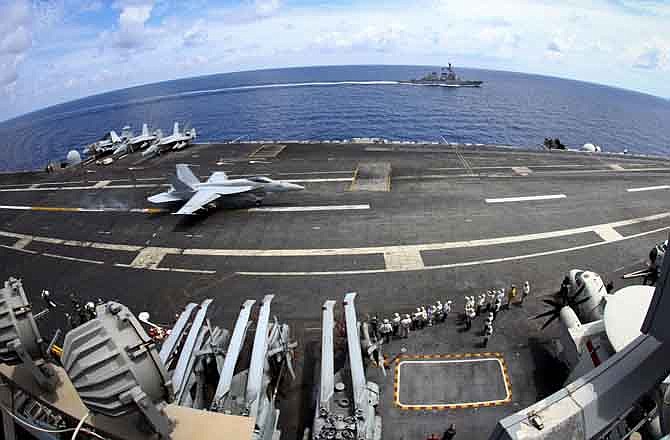WASHINGTON (AP) - Bolstered by the development of a new stealth fighter, an aircraft carrier and a record number of space launches over the past year, China is on pace to achieve its goal of building a modern, regionally focused military by 2020, according to the Pentagon.
In a report released Wednesday, the Pentagon said Beijing has closed critical technological gaps and is rapidly modernizing its military equipment, all with an eye toward preventing possible U.S. and allied intervention in a conflict with Taiwan. It also warns that the military expansion could increasingly stretch to the western Pacific in a move to deny U.S. and allies' access or movement there.
"The pace and scope of China's sustained military investments have allowed China to pursue capabilities that we believe are potentially destabilizing to regional military balances, increase the risk of misunderstanding and miscalculation and may contribute to regional tensions and anxieties," said Michael Schiffer, the deputy assistant secretary of defense for East Asia.
The report comes as the U.S. and Beijing struggle to restore their strained and volatile relations amid ongoing concerns about the largely unexplained military build-up, America's continuing support for Taiwan and persistent fractures over what are believed to be China-based cyber intrusions into American government and defense-related networks.
China froze military contacts with the U.S. last year to protest an arms sale to Taiwan worth more than $6 billion. China claims the self-governing island democracy as its own territory but Washington is committed to providing arms to Taiwan.
The Pentagon's report acknowledges that political relations between China and Taiwan may be warming, but that has not slowed Beijing's efforts to expand its military options to protect and deny allied intervention within the Taiwan Strait.
Over the past year, China marked several dramatic advances, including the test flight of a new stealth fighter and recent sea trials of its first aircraft carrier. China refurbished the former Soviet carrier and completed the trials earlier this month.
Schiffer said officials expect the carrier to become operational next year, but it will take longer than that to base aircraft on the ship. He added that China is working on building multiple carriers and support ships over the next decade.
And, early this year China staged a test flight of its new J-20 stealth fighter during Gates' visit to Beijing. At the time, Gates said China faces a "long road" before deploying the fighter in any numbers and predicted a continuing "huge disparity" compared with America's fleet of low-observable aircraft.
But the Pentagon's new report warned that the new stealth fighter along with longer range missiles and other military improvements could give Beijing the ability to strike regional air bases and other facilities. It noted that China completed a record 15 space launches in 2010, including both civil and military flights.
On Wednesday, Schiffer said that it is not solely the fighter, the carrier or any one program that raises worries, but the steady increase in military development and weaponry that could be destabilizing and "raise the blood pressure" of nations in the region.
Republican House Rep. Howard P. "Buck" McKeon, chairman of the Armed Services Committee, said Beijing's "increasing assertiveness," including its effort to deny access to the western Pacific is a growing concern and "has significant consequences for the security and stability of the region."
And he warned that security in the Pacific could be jeopardized if allies believe that the U.S. will scale back its military presence in the region in order to cut defense spending.
China's cyber activities have also been an increasing point of tension.
In 2010, the report said, a number of computer systems, including U.S. networks, were the target of intrusions that appeared to originate in China. The breaches were aimed at stealing data, but they exhibit the same skills needed for more destructive network attacks.
The Pentagon estimates that China spent more than $160 billion for its military in 2010. U.S. defense spending for that year was about $550 billion, not including the wars in Iraq and Afghanistan.
Defense officials have repeatedly called for China to be more transparent about its intentions surrounding the military build-up, but the report also notes that Beijing continues to profess that the growth is peaceful.

